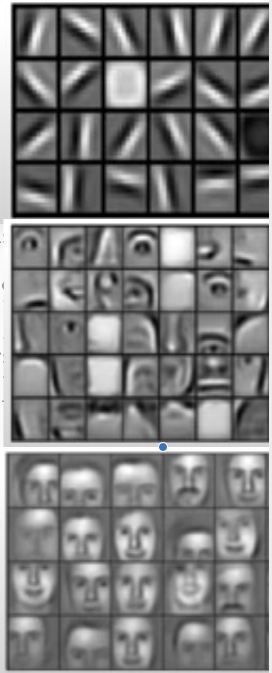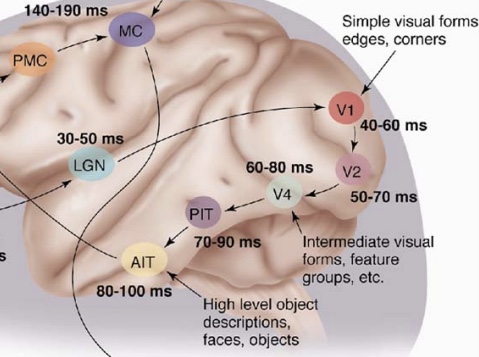Do Biomedical Engineers have an Advantage in Machine Learning?
Theory
As biomedical engineers (BMEs) we may have a unique view of machine learning and neural networks. We go through university studying multiple disciplines:
- biology
- anatomy
- programming
- probability
- multivariate calc
- linear algebra
- electrical engineering
- physics
to name a few…
Being exposed to so many different domains allow us to gain intuitions about machine learning that may not come as easy to other disciplines.
The downside is we may not have the same deep mathematics background required when optimizing problems. Luckily, with the advent of such powerful computational resources, the lack of a deep math background is less of a disadvantage while our multidisciplinary background becomes an incredible advantage. I’d love to see more BMEs consider this field.
Here are some intersections of BME and ML I have seen.
Activation Functions
ReLU - biology
Inspired by biology, as of 2017, the rectifier is the most popular activation function for deep neural networks. There was a large biological motivation for its introduction along with the math (some might say in spite of the math because of the lack of gradient in some portions of the function cause many to theorize it would not be a viable activation function).
There are many theories for the activation of neurons. Some of these theories depend on which type of neuron. An endless array for someone to explore thereby becoming a new best practice for an activate function. A BME is in a unique position to understand not only the existing biological inspired activation functions but have the potential to explore something novel.
Sigmoid - probability
Inspired by probability theory (which BMEs also have to take) was wildly used in 2011. Logistic sigmoid is also how many machine learning students get exposed to theory, even now. Having the necessary background in probability theory gives BMEs an advantage when getting started in this field.
Deep Representation - anatomy

The intuition behind deep representation makes it easier for BMEs to understand. On the right figure, there is the visual output of each layer in the network and as the input to the next layer which creates a more complex representation that is used as an input to the next layer. The final layer becomes the representation in the low dimension; our class label. This article has a deeper dive into exploring intermediate neural networks visually.
We often see this visualized where the first set of neurons “understand” edges/corners, with the next set “understanding” feature groups, and the next “understanding” faces. This progressive understanding of features with additional complexity has a biological justification/explanation/inspiration (depending on your interpretation).

The anatomical equivalent is shown on the left in a figure whose pathways along the visual cortex which will look very familiar to any BME. Similar to the representation above, here we see V1 “understanding” simple visual forms/edges/corners, followed by feature groups, followed by faces, etc etc.
Our understanding of the DNN and biological systems are not complete. With our assumptions of the DNN shown to be different; at least to our human visual interpretation. But these similarities still give BMEs an analogy they already understand with which to base their continual learning off of.
LSTM - electrical engineering
Most BMEs will recognize the components used in describing the internals of an LSTM, specifically, the very common feed-forward system. There is a lot of work in this field taking this analogy a step further where hardware LSTM circuits are created allowing instant evaluations. I’ve also seen some fluid mechanic model representations of LSTM which BME’s will also be familiar because of their understanding of fluid mechanics. As above, this doesn’t mean a BME is already a master, just that they can more easily intuit a concept due to recognizing an analogous system.
SGD - physics
Stochiastic gradient descent when considered with momentum; think RMSProp, Adam, etc has an analogy in physics. There is an extensive explanation here which does an incredible job explaining the parallels from a mathematical perspective. Because this concept of the moment has a physics parallel, it can make it much easier to gain an intuition of how it applies to SGD. Because physics is such an important foundation to inverse kinematics and medical device design, BMEs will have spent much time on this topic.
Backprop - calc
Taking \( \small\frac{\partial L}{\partial x^{(n)}}\) to minimize the cost is a multivariate calculus problem that every BME knows intimately well. From thermodynamics to fluid dynamics we’ve encountered it multiple times. In backpropagation this understanding allows us to direct our cost function to a local, hopefully global, minima. Being familiar with this task in other domains allows us to quickly understand why it is important and how to gain an appropriate intuition.
Image Transforms - linear algebra
Image transforms rely heavily on linear algebra for efficient implementation. Although, not the only place where linear algebra is used in ML, it’s one of the most visual places. Already having an understanding of linear algebra and matrix methods makes this easy to understand for a BME. Along with image transforms, almost all operations need to be vectorized to reduce the amount of time needed to train and use a model. This doesn’t mean a BME automatically knows enough to find an optimized solution, but it can make understanding the implementation and debugging much easier.
Implementation - programming
Doing everything from programming electrical system simulations to inverse kinematics simulations to finite element analysis BMEs are no strangers to engineering models of the real world to predict the future state. We may not be able to code an entire operating system, but we can easily pick up a new programming language allowing us to implement the linear algebra and multivariate calculus-based algorithm train and test a machine learning model.
Conclusion
I don’t want this to come off as BMEs are the be all end all, that’s certainly not the case. I do think it is a field that happens to be well adapted for many machine learning implementation and research tasks due to their wide skill set listed above.
It’s likely something that many startups and employers don’t think about; I didn’t realize it until I happened to think about it. This is meant to be more of a call to BMEs, if you are thinking of getting into the field, don’t hesitate. As well as a call to employers, if you are hesitating to hire someone with a background in Biomedical Engineering, don’t.
